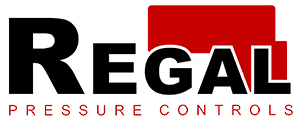Choosing the right water pressure switch involves considering several factors related to your specific application and requirements. Here’s a guide to help you select the appropriate water pressure switch:
- Pressure Range: Determine the operating pressure range of your water system. Water pressure switches are typically rated for a specific pressure range, such as 20-40 psi (pounds per square inch) or 30-50 psi. Choose a pressure switch with a range that encompasses your system’s normal operating pressure.
- Pressure Sensitivity: Consider the sensitivity of the pressure switch. Some switches have adjustable setpoints, allowing you to fine-tune the pressure at which the switch activates or deactivates. This can be useful if you need precise control over the pressure settings.
- Switch Type: Water pressure switches come in various types, including diaphragm switches, bellows switches, and piston switches. Diaphragm switches are commonly used for water applications due to their durability and reliability. Choose a switch type that suits your application and environmental conditions.
- Contact Configuration: Determine the desired contact configuration for your pressure switch. Pressure switches may have normally open (NO), normally closed (NC), or single-pole double-throw (SPDT) contacts. Consider whether you need a switch that opens or closes its contacts when the pressure reaches a certain threshold.
- Material Compatibility: Ensure that the materials used in the pressure switch are compatible with the type of water and environment in which it will be installed. Stainless steel or brass construction is often preferred for durability and corrosion resistance.
- Electrical Rating: Check the electrical rating of the pressure switch, including the maximum voltage and current it can handle. Make sure the switch is suitable for your electrical system and load requirements.
- Environmental Conditions: Consider the environmental conditions in which the pressure switch will operate. If the switch will be exposed to extreme temperatures, moisture, or harsh chemicals, choose a switch that is designed to withstand these conditions.
- Mounting Options: Determine how you will mount the pressure switch. Some switches are designed for panel mounting, while others can be installed directly onto pipes or tanks. Choose a mounting option that is compatible with your installation requirements.
- Certifications: Look for pressure switches that meet relevant industry standards and certifications, such as UL (Underwriters Laboratories) or NSF (National Sanitation Foundation) certification for water-related applications.
- Manufacturer Reputation: Choose a reputable manufacturer known for producing high-quality pressure switches. Read reviews and seek recommendations from professionals in your industry to ensure reliability and performance.
By considering these factors, you can select a water pressure switch that meets your specific requirements and ensures reliable operation in your water system. If you’re unsure about which pressure switch to choose, consult with a knowledgeable supplier or engineer for assistance.
